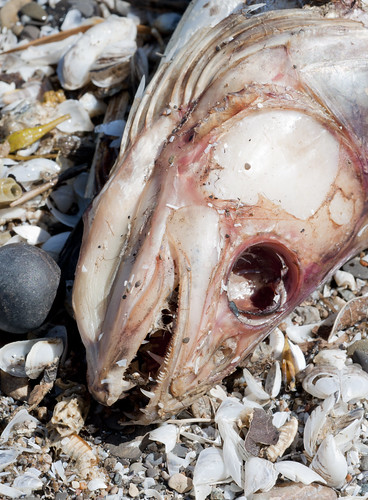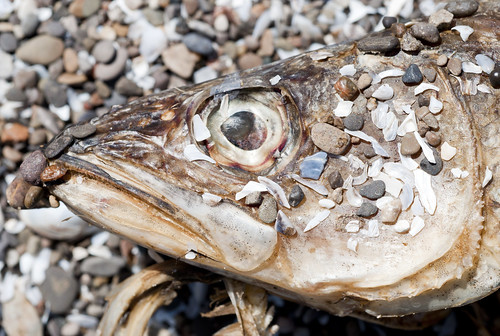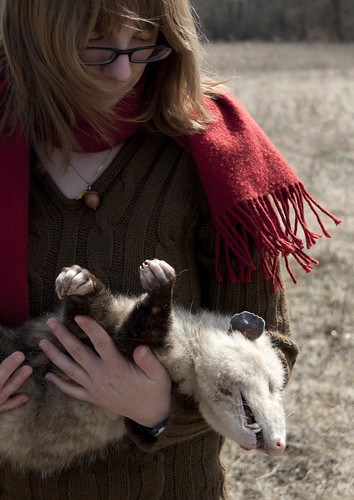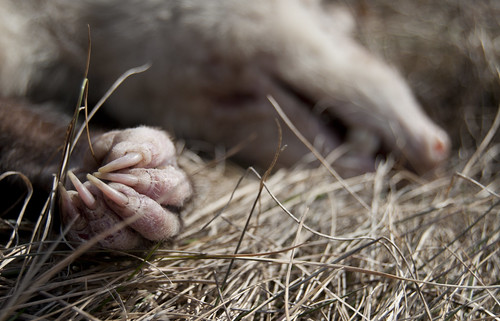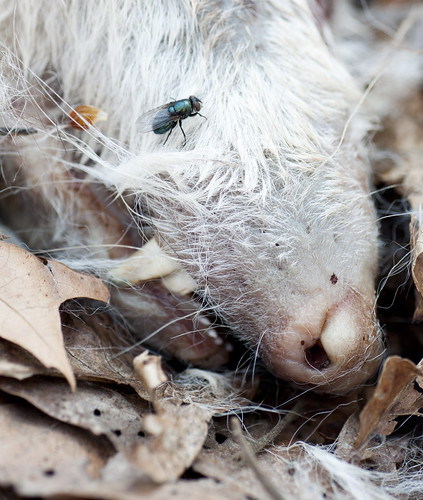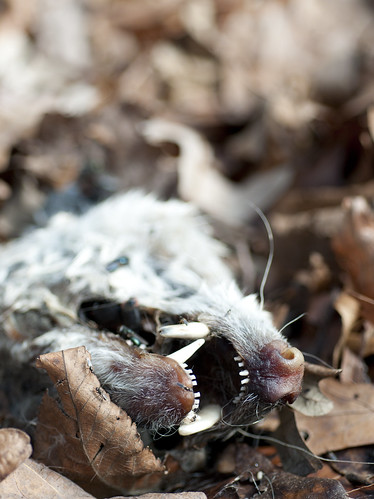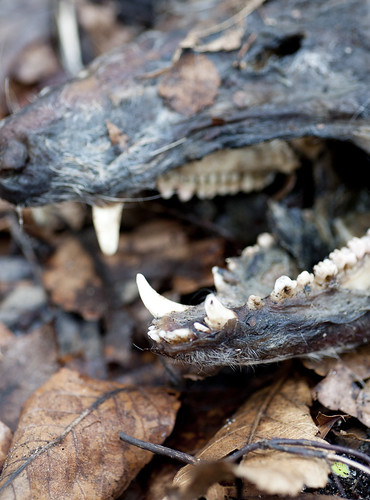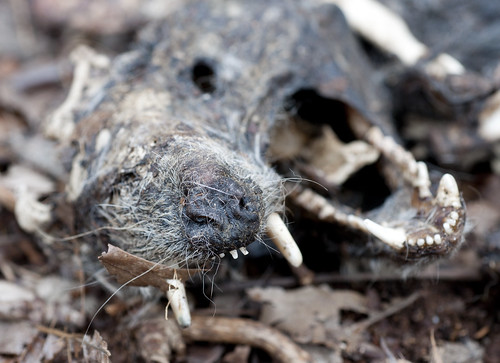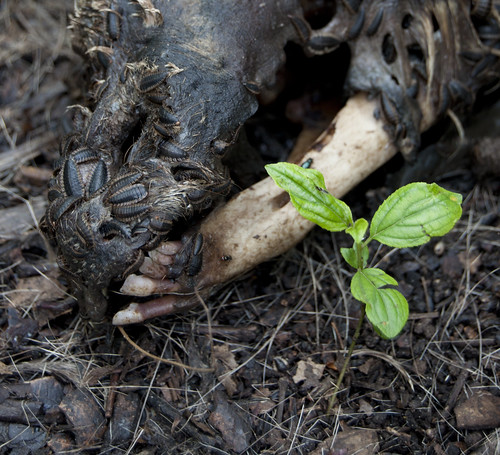
The first thing I noticed was that much of the deer's jaw was reduced to bone! (His incisors are starting to come loose, hence their kind of freaky appearance in this photograph. I'll probably be removing them soon and will let them dry out separately, as I'm afraid they'll become lost.) The carrion beetle larvae covered the nose...
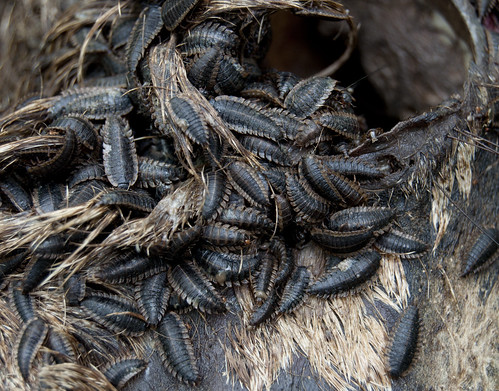

... as well as pretty much everything else (the deer's eye socket is visible in the upper-right corner of the above photograph). Their activity was audible: I could hear them scurrying about, inside the buck's head as well as under the leaf litter. Rove beetles also darted about, their black-and-yellow coloration and quick movements more wasplike than anything else. Flies continued to land on the carcass, but there wasn't a single maggot to be seen.
Eventually, I decided to turn March Buck's head over, just to see what the other side looked like. The moment I jarred the head, the beetle larvae scattered. They poured out of unseen places, a waterfall of segmented coleoptera, their skitterings louder than ever. The other side of the deer head was a pleasant surprise:

The skull, visible at last! The beetles have really done an amazing job thus far. I decided to keep the still-fleshy side against the ground, in the hopes that it will encourage more beetle activity. As the temperatures continue to warm, I can only assume that decomposition will move along faster than ever.
Eventually, I decided to turn March Buck's head over, just to see what the other side looked like. The moment I jarred the head, the beetle larvae scattered. They poured out of unseen places, a waterfall of segmented coleoptera, their skitterings louder than ever. The other side of the deer head was a pleasant surprise:

The skull, visible at last! The beetles have really done an amazing job thus far. I decided to keep the still-fleshy side against the ground, in the hopes that it will encourage more beetle activity. As the temperatures continue to warm, I can only assume that decomposition will move along faster than ever.

